For years, the R&H Hall Flour Mills were the backdrop to my life in Waterford. Living in the city, these massive, silent concrete giants on the North Quays were inescapable—they dominated the skyline and were a constant presence on the riverfront. As someone with an interest in abandoned places, I was always fascinated by them.
But today, they are gone. I documented the site just before the massive demolition project began, capturing the final days of these industrial titans. This is the story of the buildings that defined my city’s skyline for a century, and what it was like to stand in their shadow before they vanished forever.
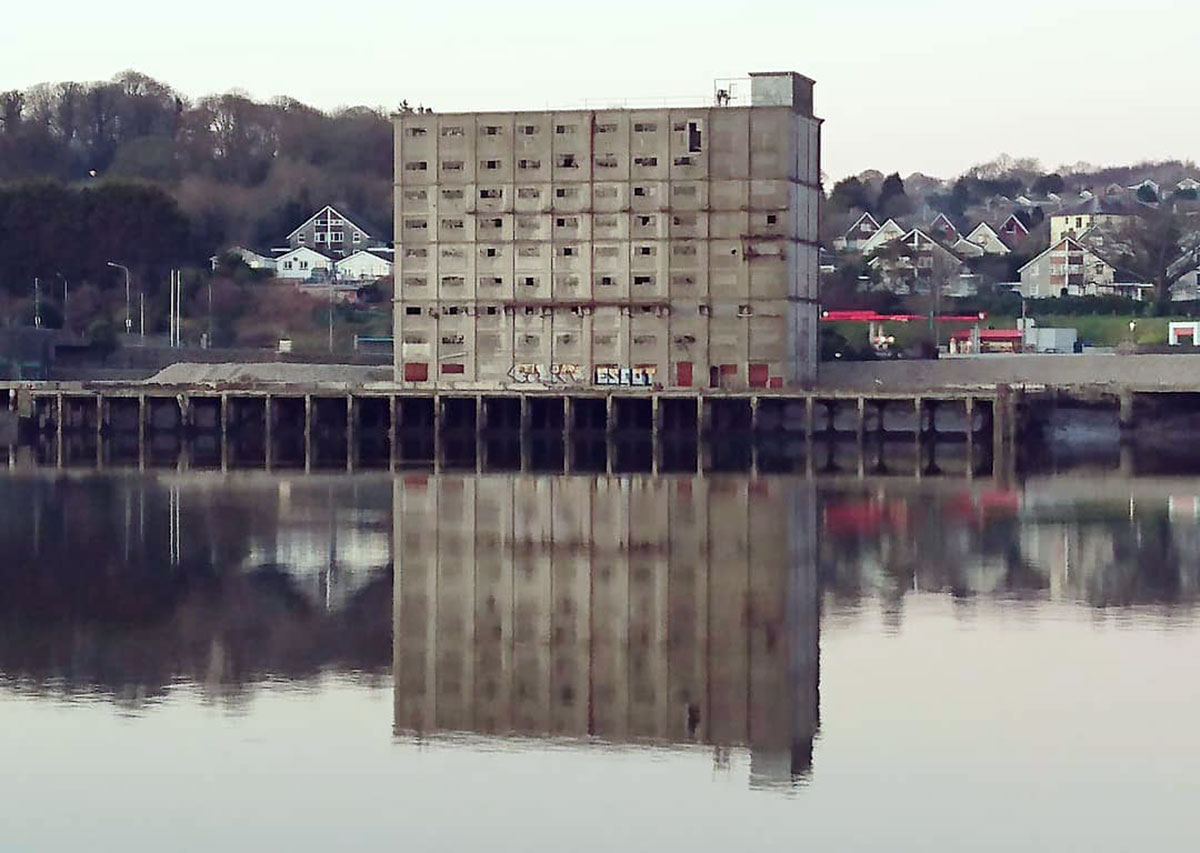
Where Were the R&H Hall Mills?
The R&H Hall Mills were located on Waterford’s North Quays along the northern bank of the River Suir in Waterford City in the south east of Ireland. Situated in the busy city centre, it encompasses a significant area of approximately 8.3 hectares (20.5 acres), extending nearly 1 kilometre (0.6 miles) along the riverfront. The site is bounded by Ferrybank to the north and is in close proximity to Waterford Plunkett Railway Station, facilitating easy access to the city’s transport networks.
The History of the R&H Hall Mills
To understand the R&H Hall mills, you have to understand the unique geography of Waterford’s quays. While the South Quays (seen in the photo below) were known as the ‘noblest quay in Europe’, a place of commerce and civic pride—the North Quays were the city’s industrial engine room.
Strategically located next to the railway terminus (now Plunkett Station) and the deep-water berths, the North Quays were the perfect interface between sea and land. This was where the heavy lifting happened, transforming Waterford into a massive agricultural export hub for the British Empire.

One of the most important companies in the city in the 19th century was R&H Hall, also known as Richardson & Hedditch Hall. R&H Hall was founded in Cork in 1839 by two English merchants, William Richardson and Joseph Hedditch. The company owned and operated a number of mills and warehouses on Waterford’s North Quays and it also had a fleet of ships that transported goods to and from Waterford’s port.
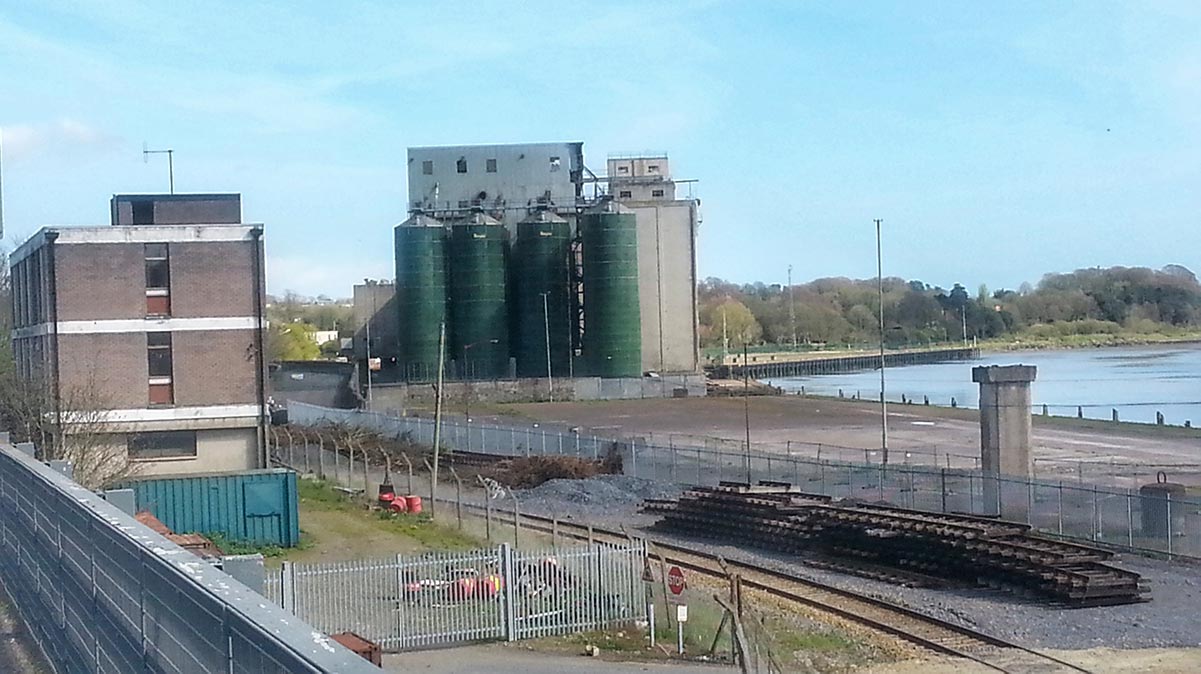
The R&H Hall mill on the city’s North Quays was completely transformed in 1905 with the construction of a large grain store, later called the Hennebique Building. It was built by William Friel and designed by French engineer Francois Hennebique, using steel-reinforced concrete. The system was quite revolutionary at the time and the building was cutting edge for its time. Before Hennebique’s system, mills were incredibly prone to fires—a constant threat with combustible grain dust. This new ferro-concrete design wasn’t just about size; it was about survival. It allowed R&H Hall to build higher and store more safely than ever before, creating the monolithic silhouette that would define the North Quays for the next century. Inside the new mill, state-of-the-art machinery and technology were used to produce high-quality flour for domestic and international markets. The mill had the capacity to produce up to 1,200 barrels of flour per day, and it employed a large workforce of skilled millers and other workers.
Other companies operated on the North Quays site. Waterford Flour Mills, famous for the production of Everest Self-Raising Flour, was owned by the Malcomson family of the Waterford Steamship Company. It was acquired by R&H Hall in the early part of the 20th century. Another was Flake Maize Limited which still operates in the city today.
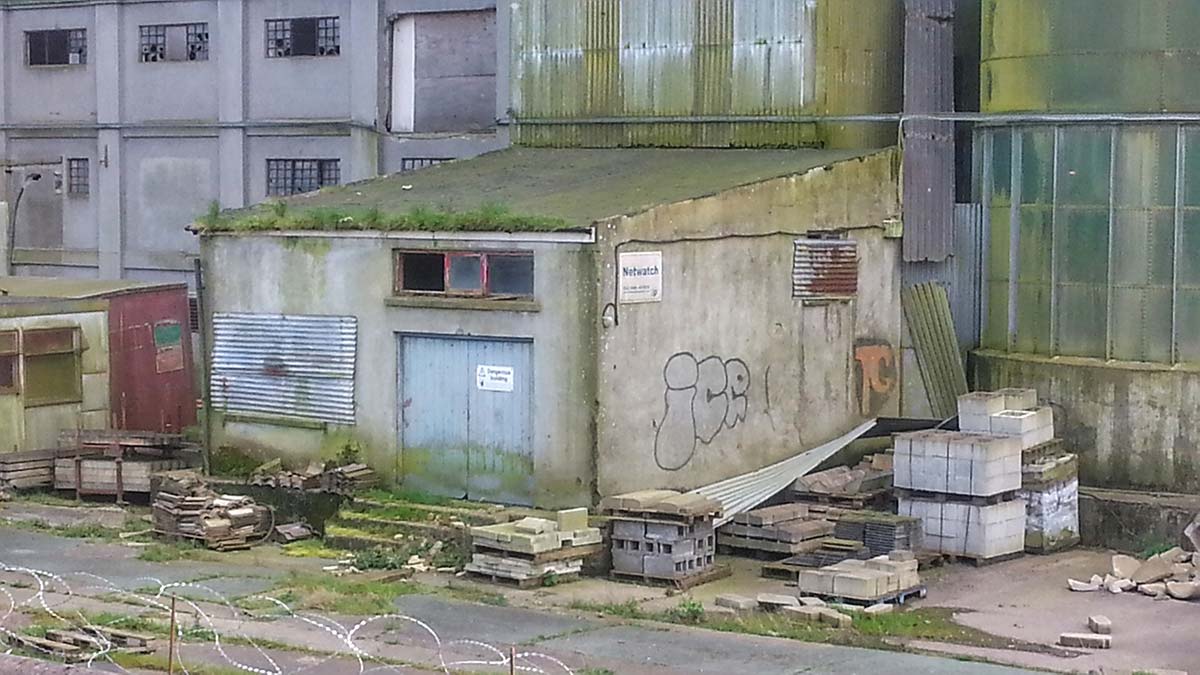
Why was it Abandoned?
As the size of the vessels used for the import and export of grain grew, so did the needs of R&H Hall and new facilities opened in Belfast, Dublin, Ringaskiddy and Foynes. The reliance on bigger deep sea ports favoured these locations and Waterford was eventually phased out and the facility closed. The mill was sold to Odlums and continued operating until a restructuring of the Irish flour milling industry in the 1980s. During this time, there was a move towards larger, more centralised milling operations in Ireland, and many of the smaller mills, including the Odlums mill in Waterford, were closed or consolidated.
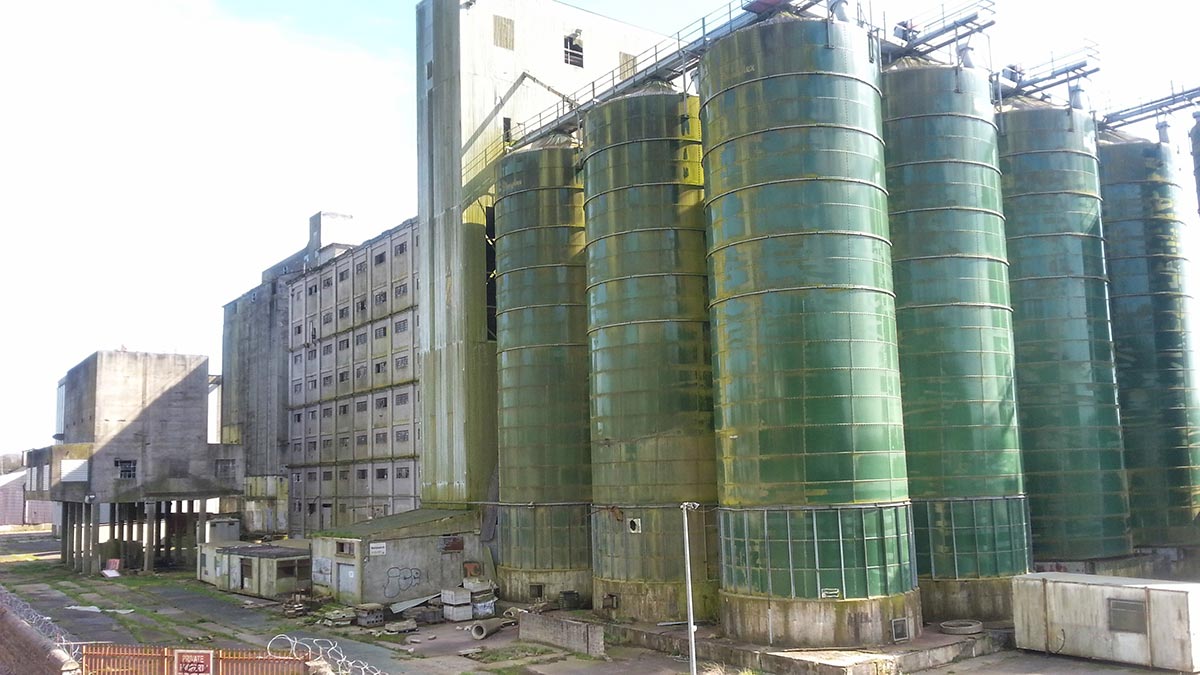
On 23 June 1993, the Port of Waterford moved 4 km (2.5 miles) downstream to Belview Port, removing cargo shipping from the city’s quays. The South Quays saw the establishment of a number of carparks along its length and the North Quays have been abandoned ever since. An investment group which included McNamara Construction, a Cork company that was quite active in Ireland’s Celtic Tiger boom years, bought the site but their plans fell through.
What is Waterford’s North Quays Like Now?
The Irish government designated the North Quays site a Strategic Development Zone, the first outside Dublin, in an effort to attract development. The Saudi Arabian Fawaz Al Hokair Group revealed plans to build retail, office and residential properties on the site but the project stalled during the Covid pandemic.

The mills remained abandoned for nearly 30 years before demolition officially began to make way for the Al Hokair development. The first silo was demolished on 10 May 2016. The final building to be demolished was the one designed by Francois Hennebique. It had famously featured a gigantic poster covering it however it was torn off by wind in the storms of early 2014. The site remained empty for some time after the demolition. It has been used as the launch site for fireworks during the Spraoi and Winterval festivals.
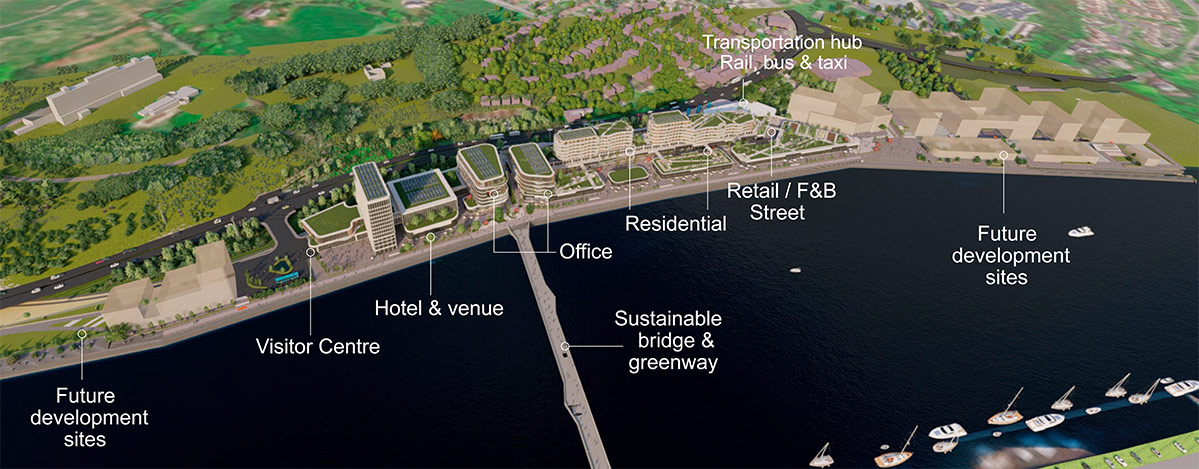
In November 2022, Harcourt Developments was announced as the new developer for the site, promising to bring life back to the North Quays after decades of silence.
For me, however, the demolition of the R&H Hall mills marked the end of an era for Waterford. The skyline I grew up with looks completely different now—flatter, emptier, and waiting for that new future. While they were ‘eyesores’ to some, they were a defining part of the city’s character for over a century.
I’m glad I documented them before they fell. I filmed this video during my visit to document the site before the demolition began. It captures the sheer scale of these industrial icons and serves as a permanent record of a skyline that no longer exists.


Pingback: The Abandoned Old Red Iron Bridge in Waterford, Ireland